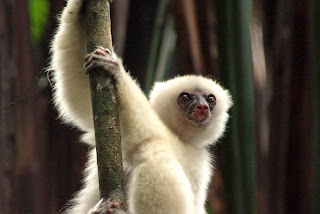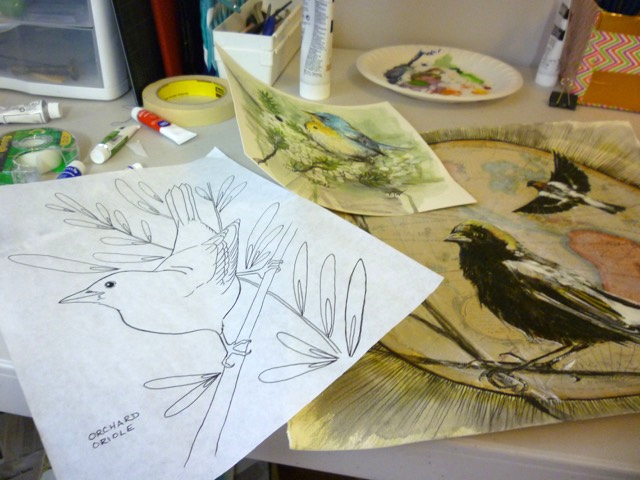Endangered Strangers: The Silky Sifaka Lemur
What's Good?
I'm the Silky Sifaka Lemur
So maybe you've heard of me maybe you haven't. Either way listen up: I'm one of the rarest mammals on this planet and right now my forest is under attack! Please recognize. People are trying to kill and eat me!
My island's endangered natural resources are being sold to the highest bidder, there is no central human government, international conservation aid has been cut off,and it is time everyone knows about it. Yeah, you can call me the Polar Bear of Madagascar. Endangered Stranger on a mission.
You may have heard us mention the current crisis is Madagascar. You can read more about it in our piece "Snakes On a Plane, Lemurs On a Plate" on the Bad At Sports blog. Due to a political coup in Madagascar, there is no central government to enforce the law. Organized crime including the illegal loggers known as the "Rosewood Mafia", bushmeat hunters, and exotic pet traders poured into the forests, including Marojejy National Park. The park, a world heritage site, was closed for months due to the looting of natural resources.
From Marojejy National Park's website:
"...every type of lemur in the area—including indris and thehighly endangered Silky Sifaka—are hunted down by packs of trained dogsand killed. The meat is smoked on site and sold throughout theregion—even as far away as the nation’s capital city, Antananarivo.”
Silky Sifakas have luxurious white fur and as they leap from tree to tree they appear to fly. For this reason they are known as "The Angels of the Forest." Born with black faces, Silkys are the only type of sifaka who, with age, loose their pigmentation and exhibit varying amounts of pink skin on their face. This condition is known as leucism.
All sifakas are named after their call, a hiss-like eruption of "shee-faak". Lemurs have only two predators: the Fossa and Humans. The Silky Sifaka population was estimated at 100-1000 before the coup.
Silky Sifaka with her infant and a friend.
Photo by Jeff Gibbs.
Today the bushmeat trade continues to thrive. Despite international outcry last month Madagascar's president and coup leader legalized the export of illegally harvested rosewood logs. Some accuse them off selling out the forests to fund the upcoming election and permanently seize power.
Marojejy National Park however, has been reopened and according to the park's site is safe to visit. Tourism is a major source of support for the park and the lemurs. Marojejy officials encourage you to visit. Eco-tourism is arguably the only sustainable income for the people in the region around Marojejy. The revenue generated by eco-tourism also validates the conservation of natural resources at a time when their only worth seems to be what organized crime is paying.
I'm a real wild creature, OK? I have never survived in captivity. I need forests undisturbed by humans to thrive, my diet is too specialized, and well, I just can't be contained, you dig? So if you don't help to save me in the wild, I'm gone. Like the majority of the flora and fauna on Madagascar- I can't be found anywhere else on Earth. So get involved STAT!
Here are a few ways you can help:
- Read all about the current crisis in an updated article published today on Mongabay.com , a constant source for news on the crisis.
- Send this e-mail to protest the legalization of rosewood export from Madagascar.It worked in December to force French shipping company, Delmas, to leave port without any timber for fear of damaging their international reputation.
- Watch what you buy! The majority of illegally logged timber is sold to China. Gibson guitars is under investigation for allegedly purchasing illegally harvested rosewood. Rosewood is most commonly used in luxury flooring, furniture,and musical instruments. And don't eat lemur meat duh!
- Support on-going lemur conservation and education through the purchase of ESPP's Golden-crowned Sifaka print.
- Fund the research of Erik Patel, a PhD candidate who is one of the only people to research the Silky Sifaka and is currently working to conserve the species in Madagascar. He is featured in the following video along with some fantastic Silky Sifaka footage.




Comments
Post a Comment